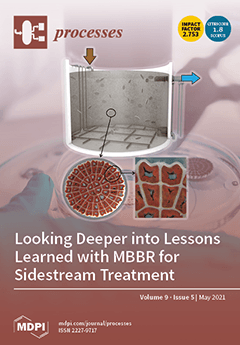MgH
2 is one of the most promising hydrogen storage materials due to its high hydrogen storage capacity and favorable reversibility, but it suffers from stable thermodynamics and poor dynamics. In the present work, an intersected Y
2O
3/NiO hybrid with
[...] Read more.
MgH
2 is one of the most promising hydrogen storage materials due to its high hydrogen storage capacity and favorable reversibility, but it suffers from stable thermodynamics and poor dynamics. In the present work, an intersected Y
2O
3/NiO hybrid with spherical hollow structure is synthesized. When introduced to MgH
2 via ball-milling, the Y
2O
3/NiO hollow spheres are crushed into ultrafine particles, which are homogenously dispersed in MgH
2, showing a highly effective catalysis. With an optimized addition of 10 wt% of the hybrid, the initial dehydrogenation peak temperature of MgH
2 is reduced to 277 °C, lowered by 109 °C compared with that of the bare MgH
2, which is further reduced to 261 °C in the second cycle. There is ca. 6.6 wt% H
2 released at 275 °C within 60 min. For the fully dehydrogenation product, hydrogenation initiates at almost room temperature, and a hydrogenation capacity of 5.9 wt% is achieved at 150 °C within 150 min. There is still 5.2 wt% H
2 desorbed after 50 cycles at a moderate cyclic condition, corresponding to the capacity retention of 79.2%. The crystal structure and morphology of the Y
2O
3/NiO hybrid is well preserved during cycling, showing long-term catalysis to the hydrogen storage of MgH
2. The Y
2O
3/NiO hybrid also inhibits the agglomeration of MgH
2 particles during cycling, favoring the cyclic stability.
Full article





